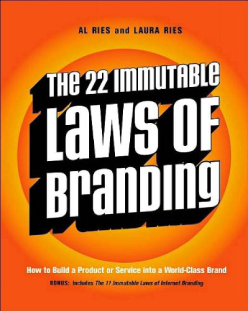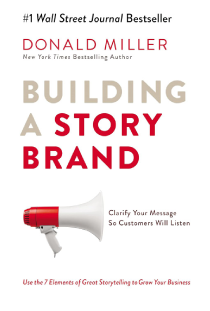Required Reading: Brand Books
Our three favorite branding books touch on reputation, differentiation and how to tell your district’s stories.


We often say your brand is really your reputation, but it’s a little more complicated than that—a strong brand includes practical, visual and philosophical elements. It should be based on a set of values that guide your work and shape your communications. So, whether you’re brand new to school marketing or just want a fresh take, we have some book suggestions to get you thinking about your brand strategy. Happy reading!

The 22 Immutable Laws of Branding
by Al Ries and Laura Ries
Let’s start with a classic how-to guide on branding. Al Ries, coauthor of The 22 Immutable Laws of Marketing—a biblical tome among marketing professionals—is joined here by his daughter Laura Ries, the chairwoman of global consulting firm RIES. This book is a great place to start if you are new to marketing and branding, but it’s also a helpful resource to return to any time you need a refresher. And although it was originally published way back in 2002, the basics of branding remain the same—in both the public and private sectors.
The authors cover the “laws” of branding as they see them, starting with the fundamental and overarching law of singularity—the concept on which branding is based. “The objective is to create in the mind of the prospect the perception that there is no other product on the market quite like your product,” they explain. Each law is paired with examples of real brands that differentiated themselves in the market. Take Starbucks, for instance. The authors explain that we used to think of coffee shops as synonymous with diners—the type that sell everything from pancakes to fried chicken to pies, all with chipped cups of stale joe on the side. Then Starbies came on the scene, got rid of all that other stuff and made coffee the main attraction, which set them apart from the competition.
The book even includes practical guidance for visual branding, such as how to choose the best fonts and colors for your logo. It also includes a bonus book-within-a-book, The 11 Immutable Laws of Internet Branding, which showcases the strategies private sector companies have used to establish strong brands online. Let’s just say The 22 Immutable Laws of Branding is a singular entry in the field of books on brand.

The Ed Branding Book: How to Build Educational Leadership with Social Influence
by Lynette White and Dr. Renae Bryant
Not many books address branding in the world of education specifically—but thankfully, Lynette White and Dr. Renae Bryant have written the only one you need. White is the founder and CEO of Lynette White Social LLC, a consulting firm that helps K-12 districts with content creation, strategic communication and social media management. Bryant is the director of plurilingual services at Anaheim Union High School District in California and hosts the "The Your Story Matters Podcast."
White and Bryant write that while branding and marketing are underutilized in education, they’re essential tools for any K-12 district hoping to strengthen their identity and their community’s connection to it. However, they argue that the job of promoting a district’s brand online doesn’t belong solely to school communicators. Rather, education professionals at every level—be they teachers, staff members or board members—should learn and embrace branding principles. To that end, the book includes a comprehensive guide to social media platforms that budding brand ambassadors can use to create content.
Unfortunately, the national narrative around education needs a rebrand. This book is full of powerful tools school employees can use to tell positive, on-brand stories that can improve the reputations not only of their own districts, but of all K-12 schools. As educational leader Dr. Rosa Perez-Isiah writes, “Dr. Bryant and Ms. White have written a book that walks us through the why and how of branding. In a time when public education is bombarded with challenges, this book is an essential and valuable resource for all of us.”

Building a Story Brand: Clarify Your Message So Customers Will Listen
by Donald Miller
In this book, New York Times bestselling author Donald Miller writes about the power of story to engage customers and build brand loyalty. As he sees it, telling stories is all about connecting emotionally with your audience, but you have to have a purpose to tell a good one. Luckily, as education professionals, you have an amazing purpose—improving the lives of students. This book can help you craft your message around that purpose in the most palatable and impactful way possible: by spinning a good yarn.
Miller goes on to say that in a world full of distractions, it is increasingly difficult for brands to cut through the noise. You have to know what words will hook your customers when there’s so much competition for their attention. “In every line of copy we write, we're either serving the customer's story or descending into confusion; we're either making music or making noise,” he writes. In this book, Miller teaches readers how to create messaging guided by what he calls the “seven universal elements of powerful stories” in order to make more music than noise.
Unfortunately, schools have to compete with the private sector for attention—in customers’ inboxes, on social media and on their phone screens. Those companies usually have large marketing staffs and even larger marketing budgets to help attract those customers. So school communicators have to tell clear, compelling stories to rise to the surface. By using this framework, Miller assures readers that they’ll increase connection and grow their brands, even in our modern, chaotic communications landscape. And it’s an enjoyable read—after all, Miller knows how to tell a good story.

